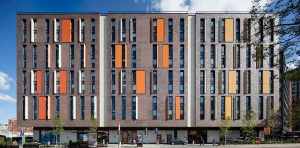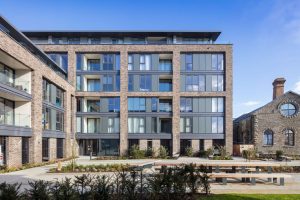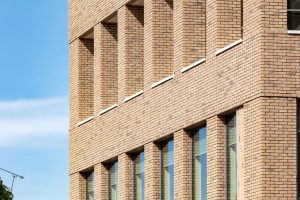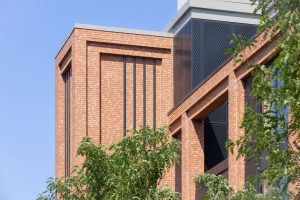With its proven ability to save both money and time on building projects, it’s no wonder the popularity of brick cladding systems are growing in England. Scotland, however, has been slow to recognise its benefits. But as Grant Softley, Technical Sales Manager of Aquarian Cladding Systems explains, that could be about to change.
As a Scottish native and with more than 10 years in the brick industry, Grant acknowledges that traditional masonry facades remain the most popular method of protecting buildings from inclement Scottish weather and the use of brick cladding systems as an alternative is practically non-existent.
The advantages of traditional masonry are of course, well known, but Grant believes brick cladding has fallen behind here in Scotland due to preconceived ideas about its durability and cost benefits. Interestingly its promotion historically has been something of an afterthought, with the only people pushing it more concerned with their targets for bricks.
But with architects and contractors under increasing pressure to reduce construction costs and build-time, the focus is starting to shift and brick cladding is starting to gain more traction – and it’s not hard to see why.
Learn More about Gebrik Learn More about Mechslip Learn More about Natural-X
Reducing costs and uncertainty
Contractors in Scotland still think brick cladding is untried, untested, and therefore risky. They also believe it is too expensive. In truth, for the right project, none of this is true and the benefits far outweigh the investment in time to explore the option.
Unlike the conventional method of bonding bricks together one at a time with mortar, which is notoriously unpredictable due to its heavy reliance on fair weather and labour availability, brick cladding systems offer a quick, simple, and predictable, robust solution with fewer design and construction limitations.
As a result, build programmes and prelim costs (including replacing scaffolding with mechanical access) can be reduced, with greater flexibility of build sequencing and less risk of programme over-run.
Being a quarter of the weight of conventional brickwork means that the need for support angles is either reduced or eliminated – as too are other conventional ancillaries such as wind posts and cavity trays. This reduction in weight and support means reduced line loads, framing and foundations, which all contribute to greater productivity and cost efficiency.
It also means fewer deliveries to site, reduced movement and storage of materials around site, a reduction in equipment needed, and less waste disposal from site, demonstrating that, when it comes to brick cladding systems, not only are costs reduced but also wastage.
Designing for life
Brick cladding systems now being widely used in the England, and available throughout the UK, enable designers to achieve brick façades without compromise, with stunning results. A wide choice of natural colours and finishes provide a wealth of design opportunities to be creative and, it could be argued, provide even greater design flexibility, allowing the designer to achieve more with a brick cladding system than with conventional brickwork.
The best brick cladding systems, like our Gebrik, MechSlip and NaturAL-X systems, use natural clay brick slips and are pointed with mortar, bringing a natural durability to the façade, which will neither fade with age nor suffer extremes of algae-growth in exposed areas. So, they will withstand weather and age just like conventional brickwork – with far less risk of unsightly efflorescence and staining normally associated with bricklaying!
The sustainable solution
When you also consider that brick cladding systems are produced using slips, which are typically 20-25% of the thickness of bricks, the embodied energy and raw materials required for a brick cladding system are considerably less than for brick production. Add to that a similar reduction in sand, cement and water for mortar and you have a solution which is much kinder to our environment.
In addition, some solutions, like our 60mm thick Gebrik Insulating Brick Cladding System, can be very thermally effective in relation to overall wall thickness and, when used as a rainscreen with a cavity, can provide healthier, breathable buildings which dry out quicker and are therefore less prone to the risks of interstitial condensation than thicker, conventional brickwork.
A brick finish remains as popular as ever in British architecture and brick cladding systems are increasingly being used to provide a warm, natural finish, whilst maintaining robust protection from the elements.
Belief and interest in brick cladding systems here in Scotland is growing, especially amongst architects. The Scottish construction industry is not only beginning to wake up to a brand-new product, but also a brand-new ideology on how to build. It’s an exciting time for brick facades here in Scotland and only the sky is the limit.
Working with architects, contractors, developers, and cladding contractors on many award-winning buildings across a wide range of sectors, Aquarian’s brick slip cladding systems include the A1-rated MechSlip and Lightweight Cladding NaturAL-X, the Gebrik Insulating Brick Cladding System. For more information or to discuss your project requirements please call 0808 223 9080, or email info@aquariancladding.co.uk




